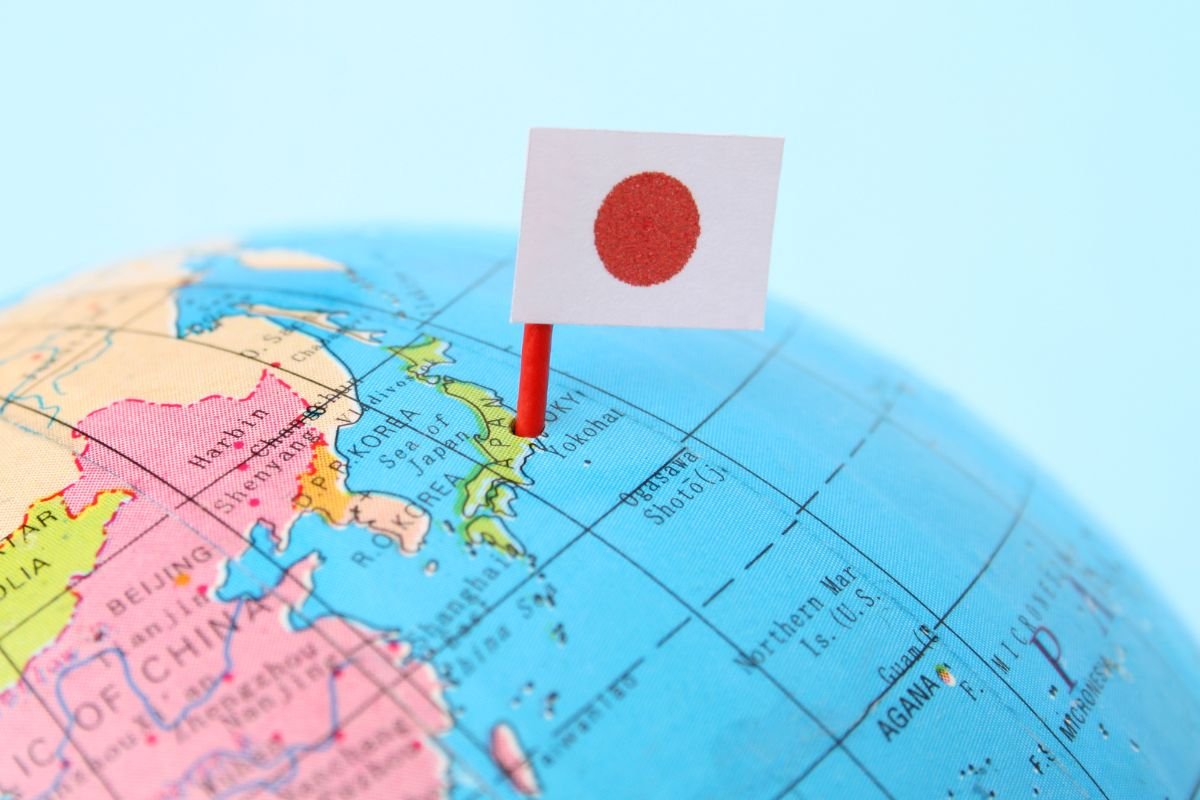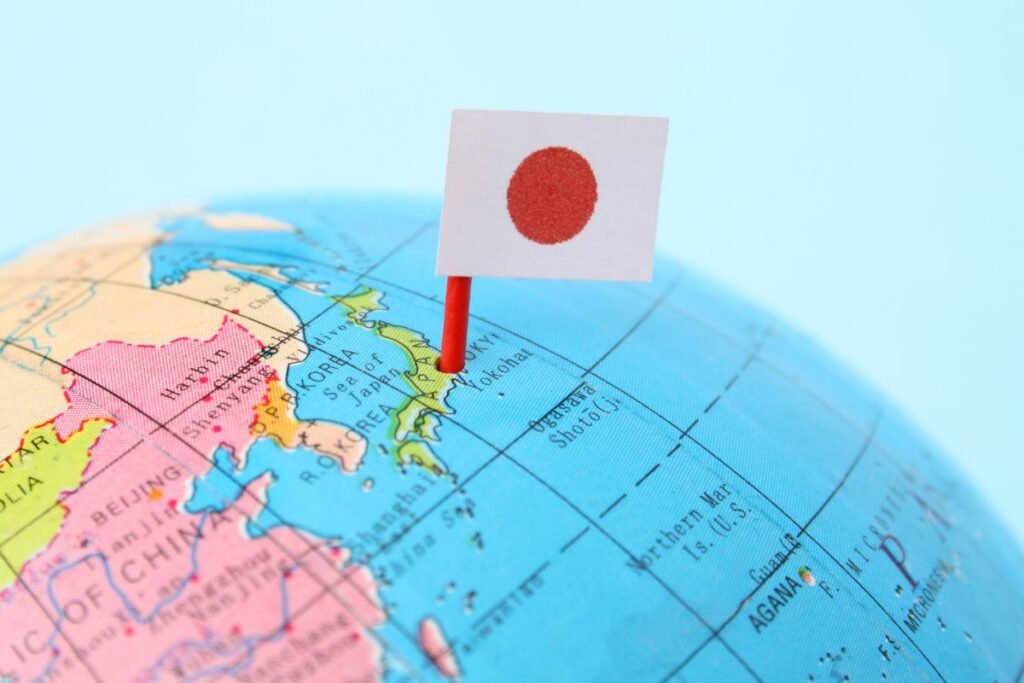Japan is possibly the furthest large country from the western world geographically, with only the pacific island nations and the countries of Australia and New Zealand being potentially further.
Its distance from our part of the world has led Japan to develop a culture and society entirely unique not just from its western counterparts, but its neighbors as well.

This has led people to look at Japan in various ways, but one of the questions that many people struggle with isn’t to do with the country’s citizens at all. Instead, the question is one of placement, as many people ask just where Japan is (see also our article on the size of Japan).
Many others go one better and ask what hemisphere is Japan in. Today, we seek to answer this question and give you a concrete understanding of Japan’s global position.
What Is A Hemisphere?
A hemisphere is basically how we divide the globe into sections. Humans love to categorize things and put them in neat little packages, and our home planet is no different.
The reason that such division is called a hemisphere is that it originally comes from the Greek ‘ἡμισφαίριον’ (hēmisphaírion) which just means ‘half a sphere’.
Now, the most common ways to use hemispheres to split the earth would be down the middle, either vertically or horizontally.
The problem, therefore, is finding the middle of a spherical object floating through space, which isn’t easy nor is it really possible, as sphere’s don’t really have a certain divisible point.
This is because no matter how you split the sphere, the two sides will always be equal.
For humanity, we managed to do the horizontal division easily, due to the existence of the equator, effectively splitting the earth in two already through geography.
The vertical split was a little more tricky and took some thinking, but the dispute was eventually solved by making the Prime Meridian going through Greenwich in England as the vertical split for the vertical hemisphere.
This was decided by a convention of nations in Washington, DC in 1884 for a couple of reasons. The first is that people already viewed the nations in the positions set out anyway, e.g. Asia is east, and the Americas are west.
The second was that the nautical charts kind of put England or at least Western Europe in the center already, so why change it.
It should be noted that most of the nations were powers on the world stage and western nations, with Japan being the only exception. This meant that anyone who had a different opinion, probably wasn’t consulted.
So, there are now four hemispheres of the world: the Northern Hemisphere, the eastern hemisphere, the western hemisphere, and the Southern Hemisphere, with the vertical and horizontal ones overlapping.
What Hemisphere Is Japan In?
Japan lies within two different hemispheres: the Northern Hemisphere and the eastern hemisphere. The eastern hemisphere is the hemisphere with the most landmass of the hemispheres and has the largest human population.
80% to 90% of humans live in the eastern hemisphere, compared to the 10% to 20% who live in the western hemisphere.
Culturally, this hemisphere is known as the ‘Old World’, as the majority of humans and human history occurred within this area.
While there were many incredible and advanced civilizations in the western hemisphere, their isolation left them vulnerable to the change and warfare that colonial empires brought.
As such, the interpretation these empires had of the western hemisphere being the ‘New World’ stuck. The eastern hemisphere contains the majority of Europe and Africa, all of Asia, Australia, and some of Antarctica.
The other hemisphere that Japan is in is the Northern Hemisphere. This hemisphere contains the second-largest amount of land mass after the eastern hemisphere.
Due to the patterns of weather and the geography of the land, the weather and climate are extremely volatile, with some places going from hot dry deserts to cold rainforests to arctic tundra within a couple of hundred miles.
The entire landmass of North America, Asia, and Europe are in the Northern Hemisphere, along with parts of Africa and South America as well.
This hemisphere also contains one of the poles – the North Pole – which are areas on earth where our planet turns on its axis.
What Is The Climate Of Japan?
Owing to its position in both the northern and eastern hemisphere, the islands of Japan are subject to quite a lot of volatile weather and changes in climate.
The best way to describe Japanese weather is ‘temperate’ because it has extremes, but most of the time these give way to fairly habitable conditions.
In the north, the winters are cold, but not freezing and often have an abundance of snow, while the summers are cool and dry in the north too.
In the south, the winters are incredibly mild and subject to dry periods, whereas the summers are incredibly hot and wet, with typhoons regularly sweeping through the area.
Japan also receives a lot of rainfall, between 40 and 100 inches. This is caused by its position as an island nation bordering the world’s largest ocean, the pacific.
The water is sucked up into the air via a vacuum and with no land to deposit the rain on, the suction keeps occurring. This eventually causes it to swell and move, until it reaches land.
Any island nation bordering the pacific is subject to these rains, but Japan and the Philippines experience them the worst.
The Ryukyu Islands and the Okinawa Islands experience these typhoons on a regular occurrence, before they travel upwards, towards Tokyo and Nagoya.
The hemispheres have influenced the climate of Japan greatly and its position could be compared to the United Kingdom.
Both are wet, ocean bordering islands, but whereas the UK is overall a cold temperate, Japan is a warm temperate climate, thanks to their position on the globe
Conclusion
Japan resides in both the northern and eastern hemispheres, as do most countries and people’s in the world.
These hemispheres give Japan the unique environment that exists on the islands, but have also contributed to how the people of Japan view themselves and the climate that exists throughout the islands of Japan.
- What Is a Maiko? - July 13, 2025
- What Does Domo Arigato Mean? - July 12, 2025
- What Does Naruto Mean? - July 12, 2025









